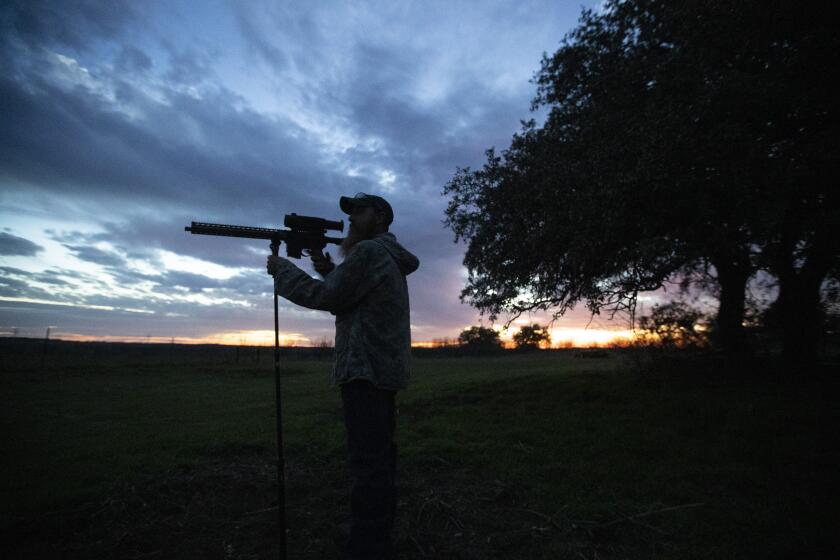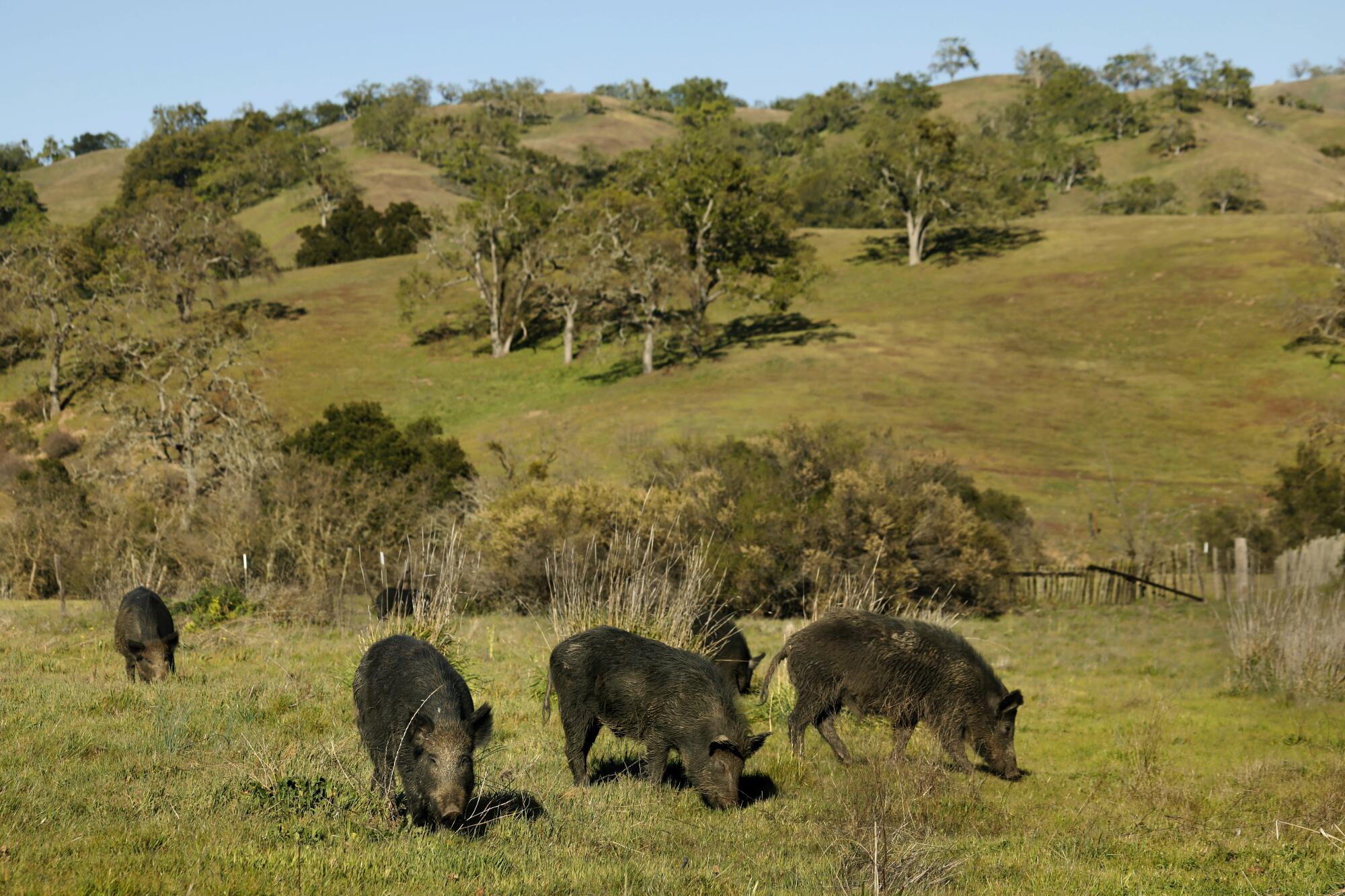
SAN JOSE — Dana Page is no cold-blooded killer. She loves animals, sunshine and public lands.
But Page says “depredation” must be part of the toolkit to prevent wild pigs from ripping up Santa Clara County’s parks, tearing up lawns, fouling rivers and reservoirs, and killing native fauna such as red-legged frogs and California tiger salamanders.
“It’s hard to sit back and watch the destruction,” said Page, natural resource program coordinator for Santa Clara County Parks.
California’s feral pig population has become a monumental headache for government land managers, farmers, homeowners, conservation biologists and water district officials. But there is no clear way to ease the pain. Making it easier for hunters to kill pigs is a dubious proposition. Going after their food sources would cut a wide swath through California’s fauna and flora. Short of culling their numbers with a full-scale military operation, the porcine pests will continue to do damage.
Feral pigs are like roving rototillers, using their snouts and hooves to unearth dirt-dwelling insect larvae and eat acorns, invertebrates, eggs, small mammals and plants. Their feeding patterns not only cause enormous ecological damage, but the end product — their poop — poses an even further threat. These generously sized mammals — adults range from 150 to 500 pounds — are known to spread more than 30 infectious diseases, 20 of which can be transmitted to humans, including leptospirosis, toxoplasmosis and tularemia.
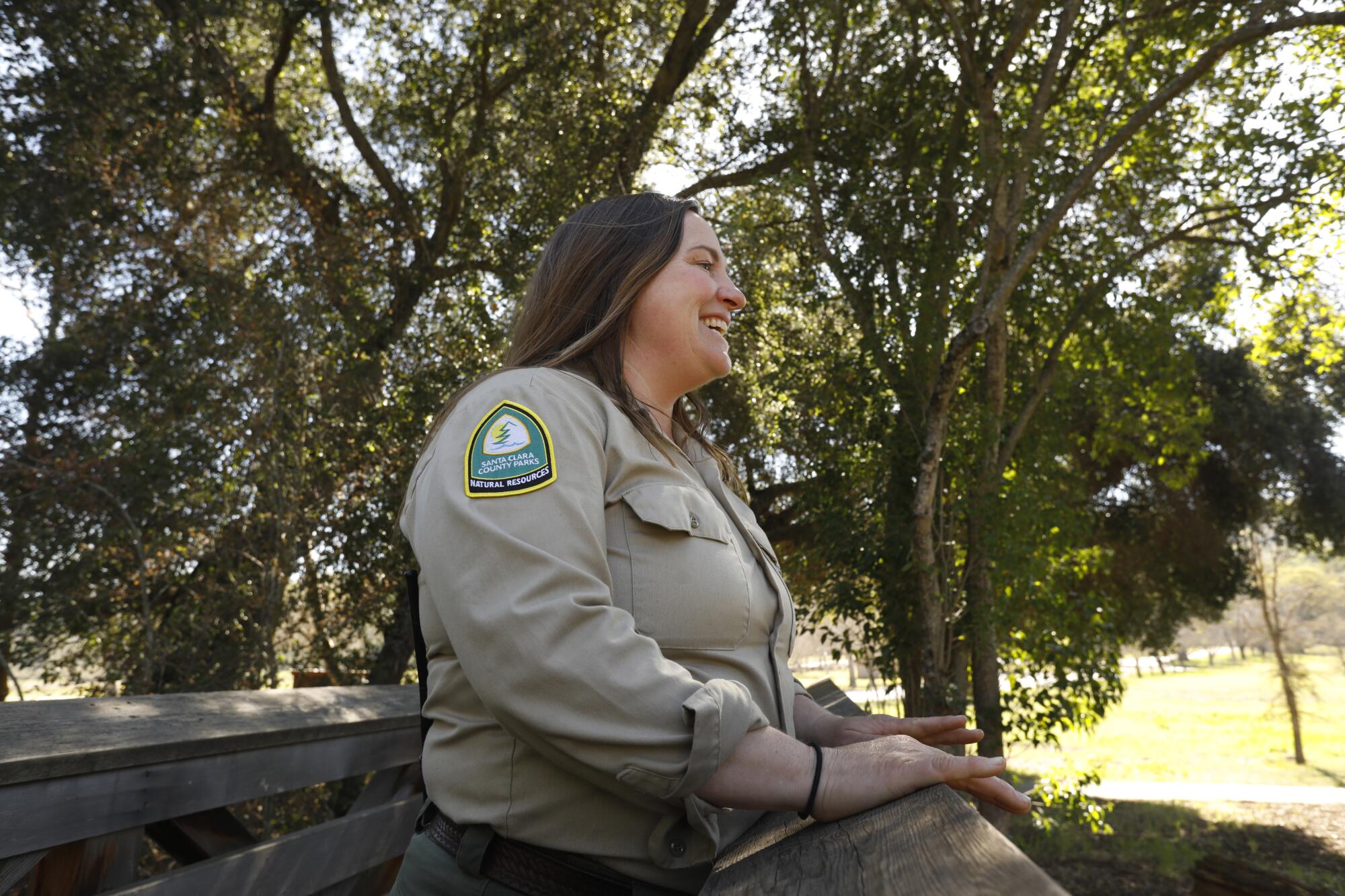
In 2006, food safety officials pointed to feral swine as causing an E. coli outbreak in spinach from Salinas Valley. And water regulators and engineers are wary about the pigs contaminating reservoirs and rivers, as well.
Nationwide, wild hogs also inflicted harm more directly — by injuring, and in rare instances, killing people.
In 2019, a pack of wild pigs killed a 59-year-old Texas healthcare worker, downing her as she attempted to walk the few steps from her car to her clients’ front door.
She was only the fifth person to die in a feral pig attack in the United States since 1825. Wildlife managers worry deadly confrontations are likely to grow in frequency as sharp-tusked feral pig populations swell.
Page is one of those managers. A wildlife biologist, Page oversees the county’s 52,000 acres of parkland, which stretch from the fertile “fruit basket” of the Guadalupe River Valley to the foothills of the Santa Cruz Mountains.
But because of a decision made by the Santa Clara County Board of Supervisors in 2010 — largely spurred by concerns over cost and animal welfare issues — Page is prohibited from killing pigs, unless they pose imminent harm or a threat to someone. Parkgoers report roughly two or three pig encounters each year, she said, and “things are only going to get worse.”
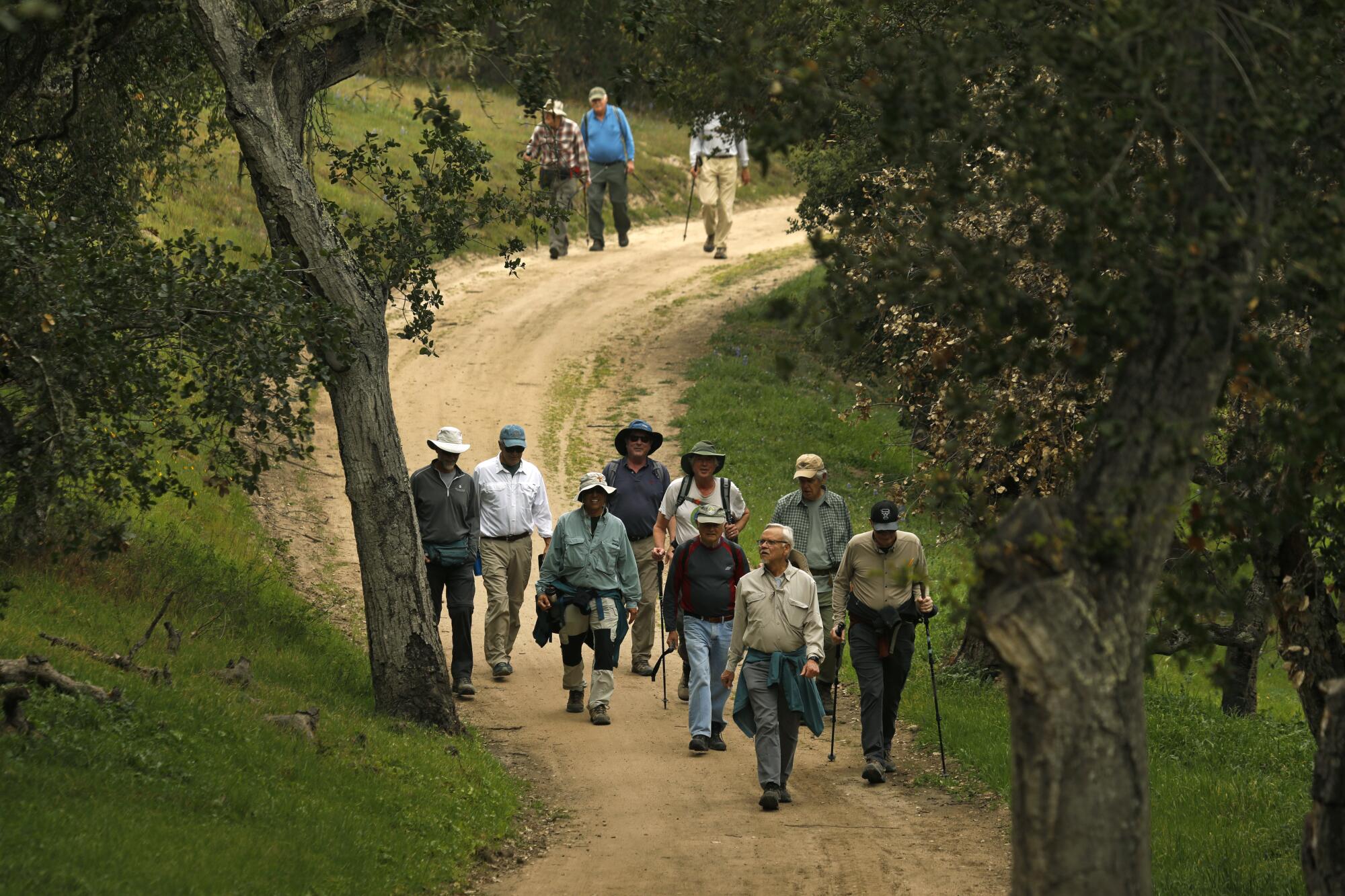
With her hands tied, Page is leaning on other land managers — including those from state parks, the Santa Clara Valley Open Space Authority and the Peninsula Open Space Trust — to share in a coordinated, continuous effort to slow the spread of swine.
“If you’re not doing it routinely, you’re just getting more animals in that area,” she said.
It is not known how many feral hogs exist in California, but the numbers are thought to be in the hundreds of thousands. Nationwide, there are an estimated 6 million, according to the U.S. Department of Agriculture.
In California, feral pigs have been identified in 56 of the state’s 58 counties. The only pig-free counties: San Francisco and Alpine. Ken Paglia, a spokesman for the state Department of Fish and Wildlife, said it was probably more accurate to say they are “common throughout California but less common at high elevations and the desert.”
Wild pigs are wearing out their welcome in San Diego County
“I wouldn’t want to make the claim that there has never been a wild pig in Alpine County, since someone is bound to contradict us,” he said.
They’re also spreading nationwide. Feral pigs are now in 42 states, including Hawaii, where they’ve been implicated in large-scale forest destruction, threatening endangered species and attacking a surfer while she was in the water.
Across the nation, federal officials estimate that pigs cause between $1.5 billion and $2.5 billion worth of damage to agriculture and property every year. Environmental organizations, researchers and public wildlife agencies have called them the “most destructive” invasive species in the country.
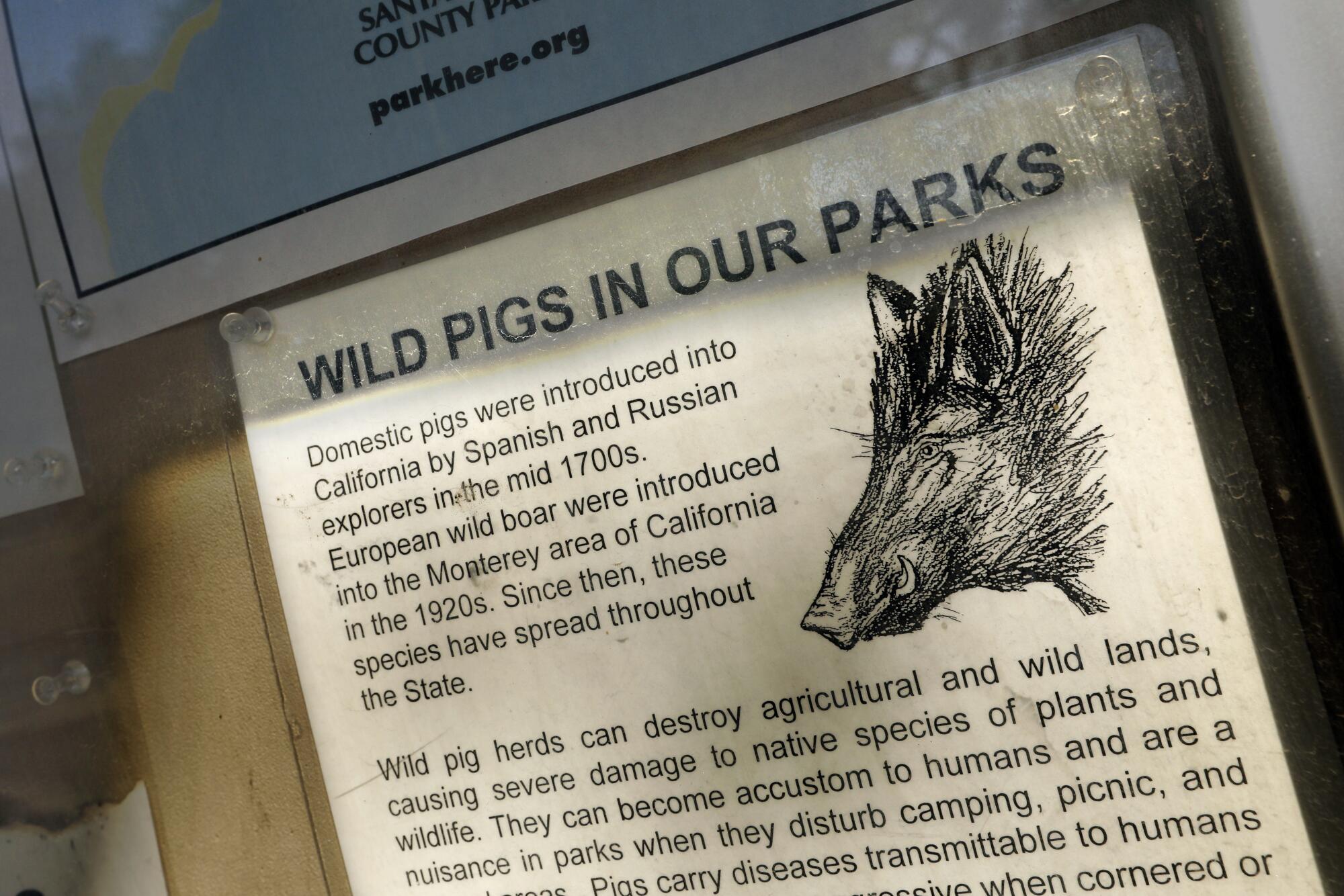
Not native to this continent, the feral pigs roaming North America today came into being only in the last 150 years — the byproduct of a love connection between free-ranging domesticated pigs and European wild boars, imported at different times and in different places. The variety roaming California’s golden hills is largely the blended descendant of pigs that Spanish missionaries imported in the 1700s and the wild boar a Carmel-by-the-Sea bon vivant, George Gordon Moore, introduced in the 1920s.
Moore — fabled to be the inspiration for F. Scott Fitzgerald’s Jay Gatsby character — purchased Rancho San Carlos, a 22,000-acre retreat in Monterey County, in the early 1920s. His aim was to start a hunting preserve he could share with his friends and business buddies, beginning with nine sows and three boars.
Those boars, however, soon became acquainted with the feral pigs descended from the stock brought by the missionaries.
This mingling spawned a remarkably prolific species — some biologists call them “super pigs” — wickedly smart, with an adaptable diet, enabling them to occupy a variety of ecosystems. They also breed like, well, rabbits: Wild pigs can produce up to four litters per year, ranging from a handful of piglets to 18, and females become sexually mature by 4 months of age.
By 1963, Moore was bragging to a friend about his pig proliferation. “The last time I saw William Randolph Hearst, Sr., he said ‘your pigs have reached San Simeon,’” Moore wrote in a letter.
Pig packs, also known as sounders, generally consist of at least one sow and a multigenerational assortment of her offspring.
“It’s hard to sit back and watch the destruction.”
— Dana Page, natural resource program coordinator for Santa Clara County Parks
Wild pigs feed on roots and acorns in Joseph D. Grant County Park. (Carolyn Cole / Los Angeles Times)
On a recent daytime visit to Joseph D. Grant Park in San Jose, two sounders of roughly 15 to 20 pigs were seen digging up fields and rooting around the exterior of the former ranch’s white clapboard historical house. As a Times reporter approached the pack, a few piglets scampered away, while a pair of sows held their position, not breaking eye contact — making clear that retreat might be best.
Such packs have no natural predators in North America. Coyotes and even mountain lions are too small to kill adults, and they’ve shown little interest in pursuing piglets protected by 200-pound sows.
“You’re talking exponential growth,” said Bryan Flores, Monterey County Parks manager, referring to the local pig population. Flores has spent years trying to keep the destructive swine out of his parks near Moore’s former ranch — an upscale golf-centered housing development called the Santa Lucia Preserve.
But just as he thought he was making progress, the pigs learned how to carry off trash cans. They broke the iron chains holding the metal baskets to sturdy poles and spread garbage around the parks.
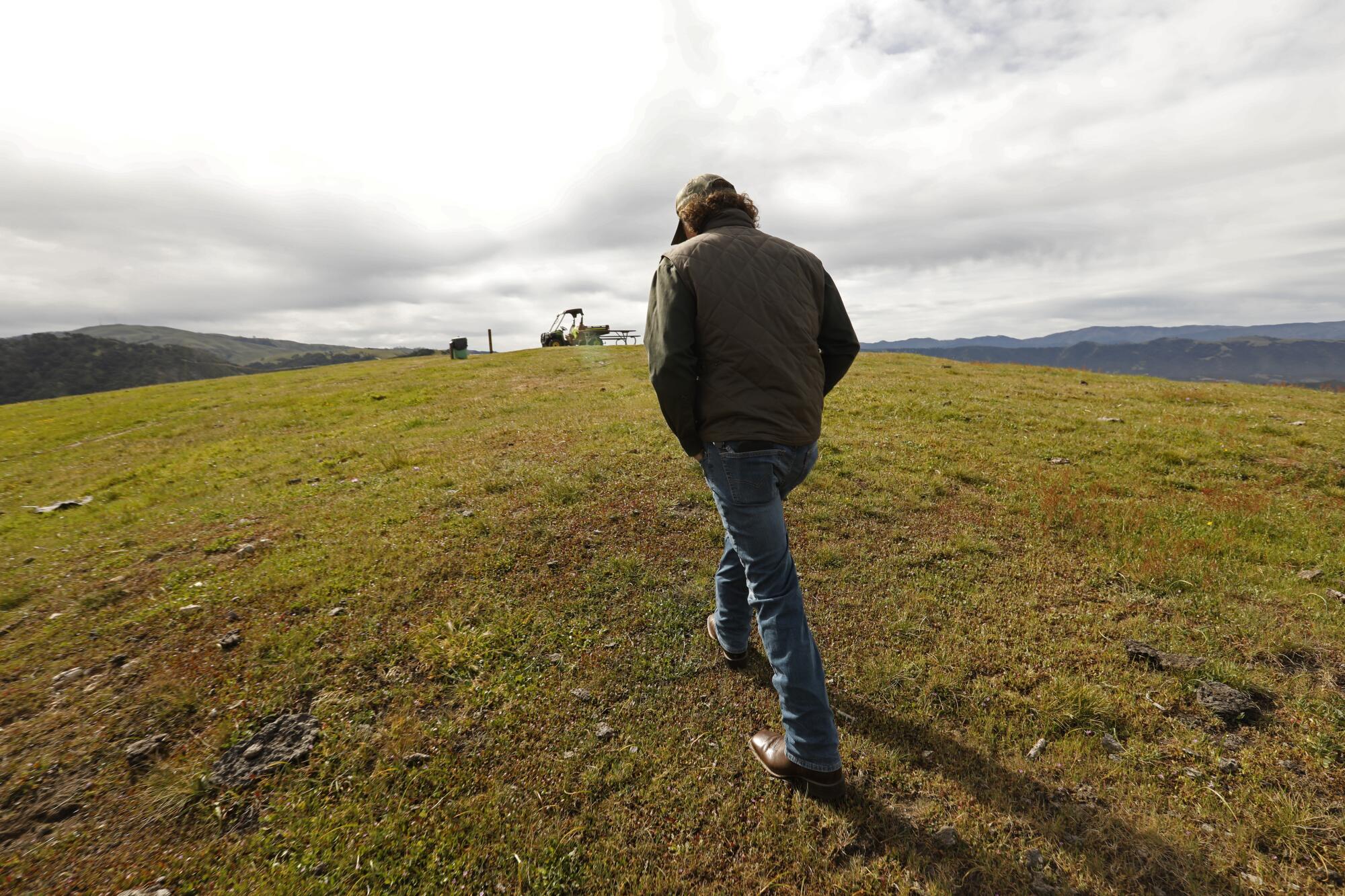
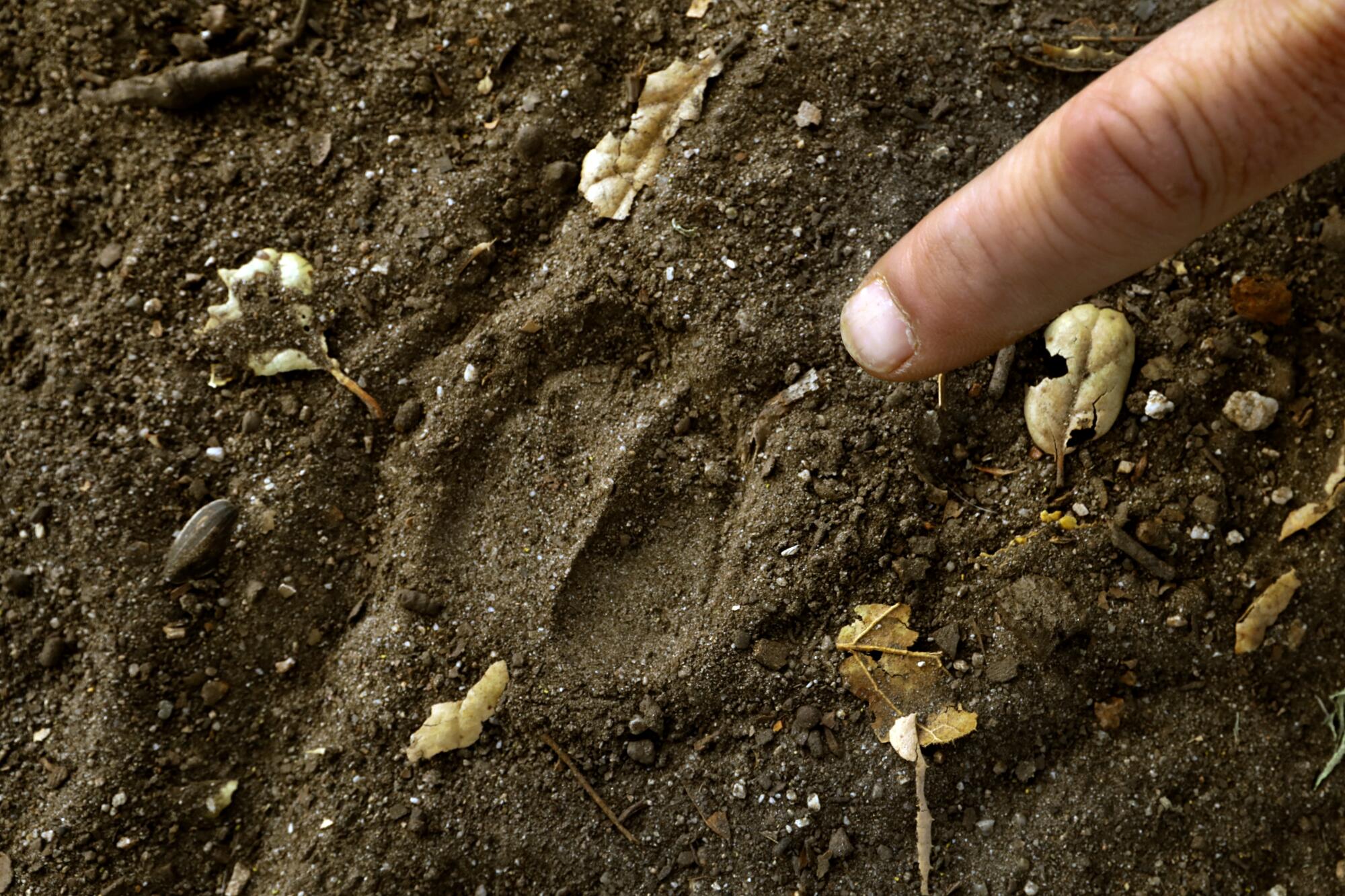
Unlike in Santa Clara, Monterey allows Flores to kill pigs. It’s a method of eradication that one state senator, Democrat Bill Dodd of Napa County, is hoping will become more widespread.
Dodd has introduced legislation that will relax regulations and reduce hunting fees for pigs, while stiffening laws regarding their release into the wild and shutting down contained pig hunting operations. It would also reclassify pigs as exotic game mammals, allowing night hunting and the ability to use artificial lights for tracking and spotting.
For some hunters, including Kelly Papenfus, a Santa Cruz postal worker who lives in San Jose, the changes won’t make much of a difference. Especially for those seeking out game on public land.
Feral pigs by the numbers
6 million - Estimated number nationwide.
$1.5 billion - Estimated minimum damage they cause each year nationally.
412 — Attacks on people in the United States between 1825 and 2012.
20 - Infectious diseases they can spread to humans.
5 - People killed in attacks in the U.S. since 1825.
Sources: U.S. Department of Agriculture; Savannah River Laboratory.
He’d like to see the state open up more areas for pig hunting — instead of just relaxing rules and fees.
“It’s already really cheap and you can get as many as you want,” Papenfus said, referring to the number of pig tags a hunter can get from the state. The problem, he said, is that there are so few public places where hunters can find and shoot pigs. And in the few places that do allow hunting, the pigs know not to hang around.
Papenfus has killed only one pig in the two-plus decades he’s been hunting. He killed that pig on private land, after being invited by the landowner.
Data from the Department of Fish and Wildlife bear out Papenfus’ experience: Between 2007 and 2021, the percentage of pigs harvested on public lands in California ranged between 4% and 7%. On private lands — where hunters often pay steep fees to bag a pig — the percentage ranged from 81% to 93%. The remainder included pigs hunted on military land, and unreported harvests.
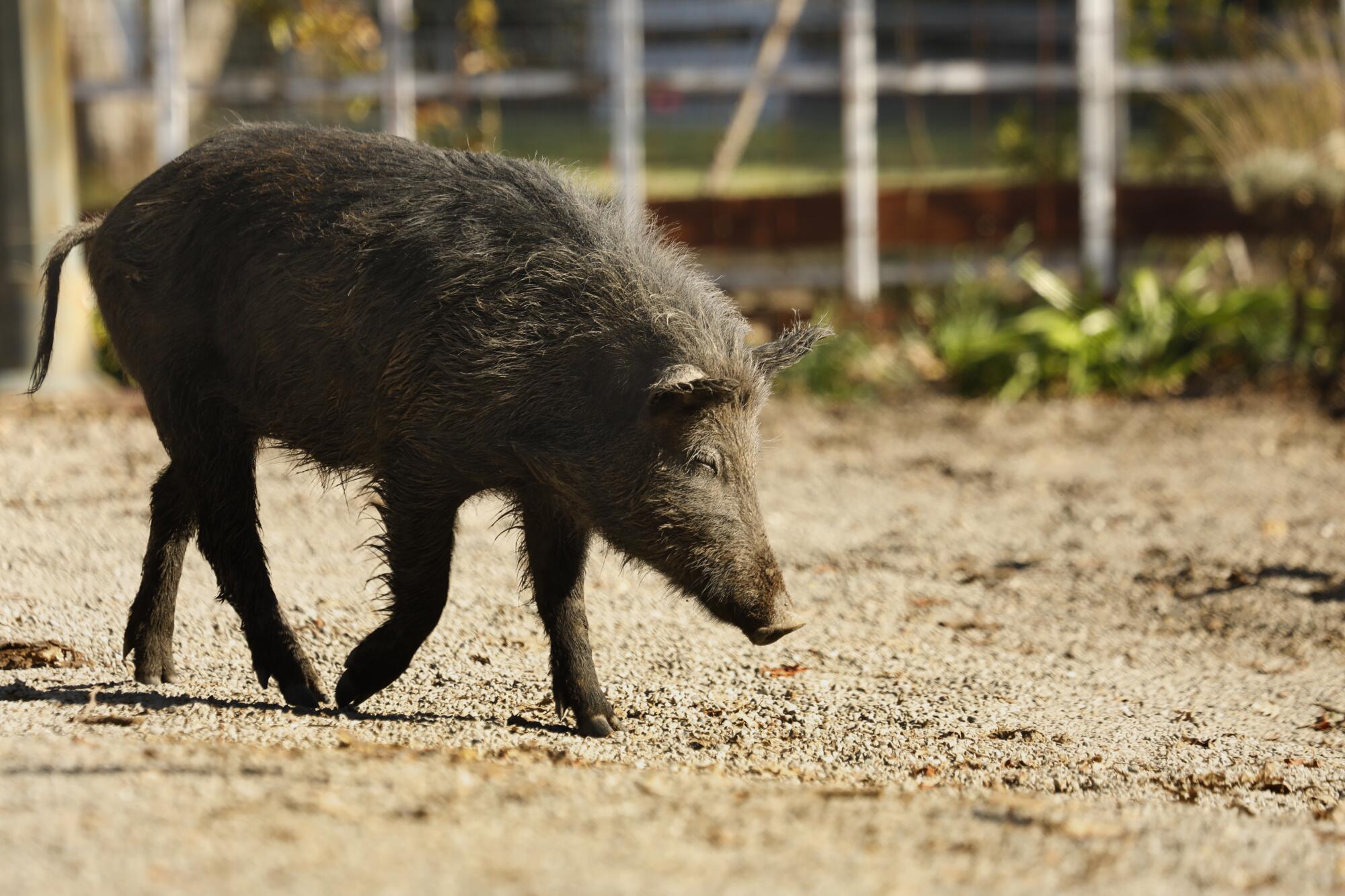
Even if California makes it easier and cheaper to hunt wild pigs, experience elsewhere suggests that increased hunting will not be an effective pig-eradication solution.
In Texas, which has more pigs than any state, hunting has been embraced. There are tournaments and festivals. And hunters can use all sorts of equipment, including night vision, helicopters and even hot air balloons.
But in other states where pigs are threatening to invade or reinvade, including Colorado, officials say they have no plans to issue pig hunt permits, in part because of evidence suggesting that hunting actually promotes the spread of swine.
It’s open season year-round on Texas’ 3 million feral pigs, with hunters using thermal trackers, digital pig calls, helicopters and even hot-air balloons.
The thinking goes that once hunters have a legal right to go after pigs, it builds an incentive for them to keep pig populations robust and move them to areas where their numbers are low. Genetic studies bear out this observation. In Florida, researchers were able to show that human-mediated transport had contributed to the genetic variation in pigs they were observing.
As one Texas A&M author noted in a publication about pigs: “The USDA estimates the feral swine population in the United States is spreading at a rate of 55 to 70 miles per hour … in the back of trucks and trailers.”
Increasingly desperate, land managers are testing out different techniques for controlling pigs. In Santa Clara County, Page said she has seen some success introducing predatory nematodes (a kind of worm-like creature) into the soil, reducing the grubs pigs like to eat.
But it’s hardly a panacea, said Dennis Orthmeyer, California state director of the USDA’s Animal and Plant Health Inspection Service’s Wildlife Services.
“Nematodes would be difficult on large areas such as the Joseph D. Grant Park on Mt. Hamilton,” said Orthmeyer. “Urban areas? Not sure if homeowners want nematodes in their yards.”
There are a few places in California, however, that have been able to stop the swine invasion.
In 2007, National Park Service employees eradicated feral pigs from Santa Cruz Island, killing 5,036 of them. These pigs, which had no wild boar influence, were descendants of pigs introduced by shepherds in the 1850s.
The other place is Pinnacles National Park — home of the endangered California condor. Straddling San Benito and Monterey counties, the park is carpeted with rolling hills of oak forest and grass, with a dramatic, mountainous interior of craggy, finger-like rocks jutting toward the blue sky. For visitors driving to the park south from Hollister, it feels like stepping back in time.
It’s why park managers, in the 1980s, decided to keep the pigs out by building a 33-mile-long fence around the park’s perimeter.
It took almost two decades to finish the first part of the fence, which was initially just 24 miles long, said Dan Ryan, the park’s director of wildlife biology and a hunter. And once it was finished, in 2003, it took two more years to trap, hunt and kill every last pig living inside. When the fence was extended in 2011, it took an additional 2½ years to kill all the pigs.
“They’re really smart. They see a trap once and escape. You’re not going to get another shot with them. They learn.”
— Dan Ryan, wildlife biologist at Pinnacles National Park
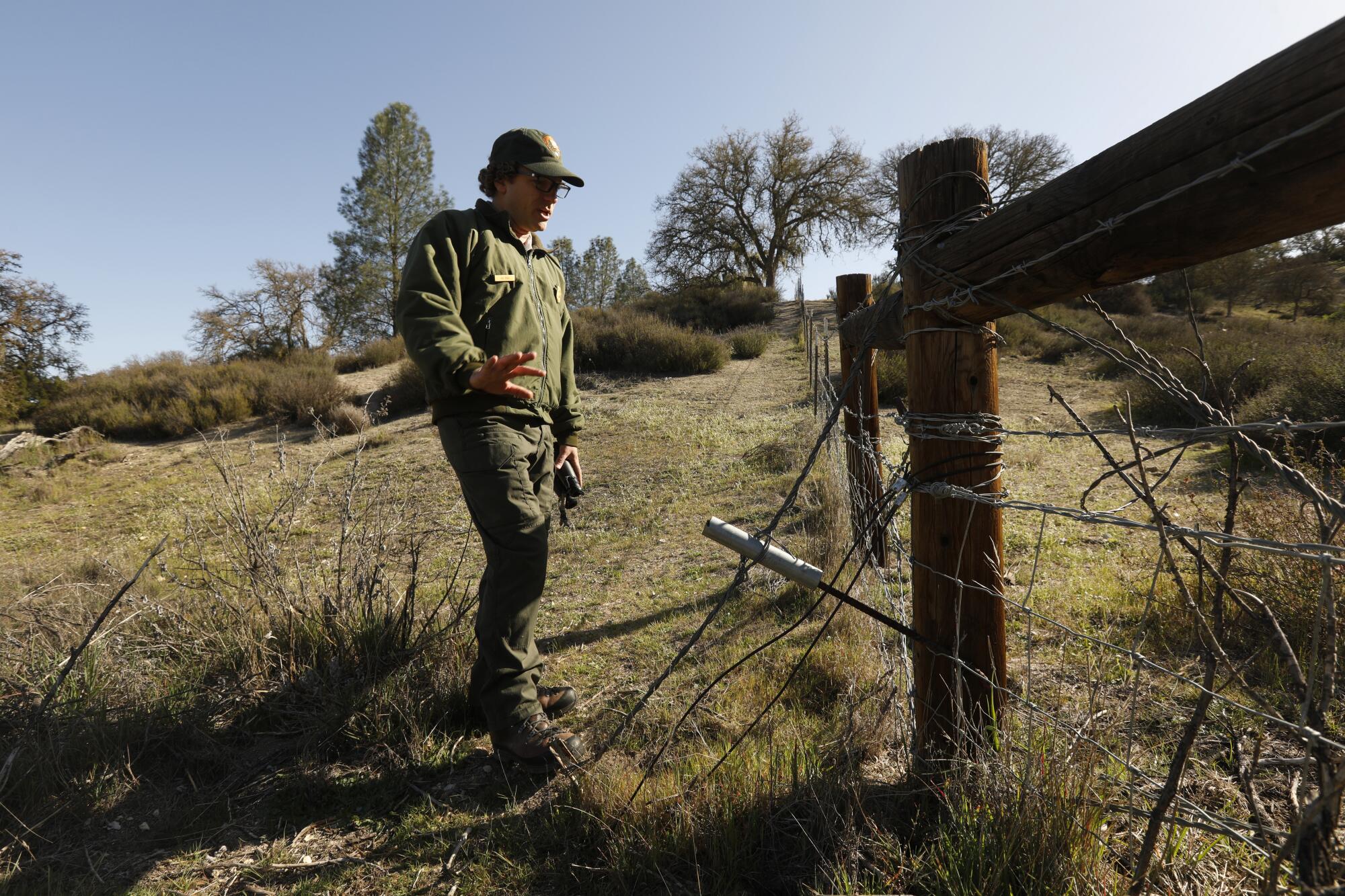
According to Ryan’s records, it took about 20 to 25 hours of hunting time to kill a pig in the first six months after the park erected the fence.
“After that it is basically zero return — we were down to one or two individuals, but nature gets them before we do,” he said.
“They’re really smart,” he said. “They see a trap once and escape. You’re not going to get another shot with them. They learn.”
In November, the pigs executed their first fence breach since the perimeter was completed.
According to Ryan, coyotes had dug under the structure, creating a passage large enough for a pig to squeeze through. When acorns from a nearby oak fell into the hole, the pigs followed and came up the other side.
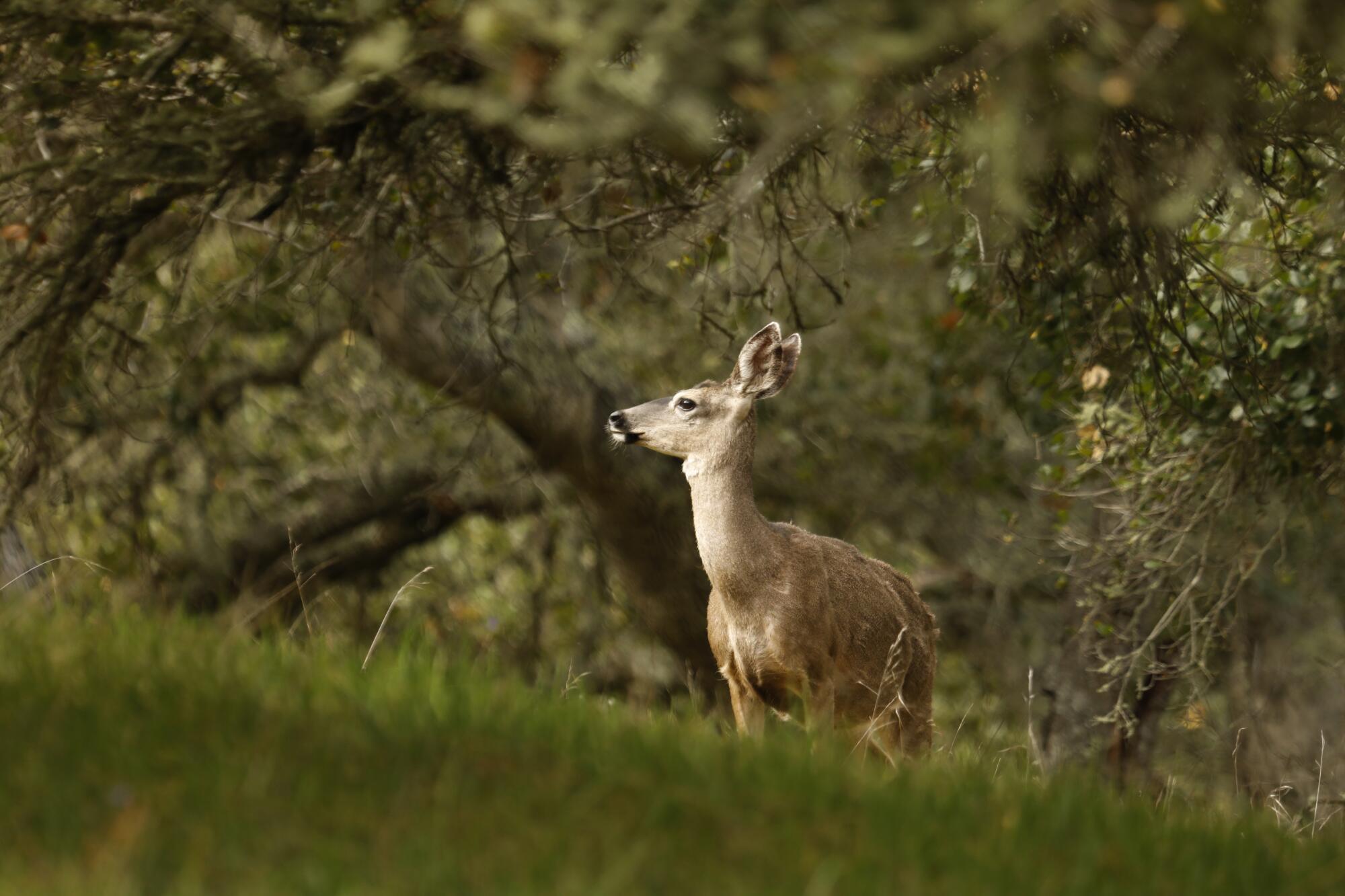
Fortunately, they were spotted soon after the breach, and one scurried back through the hole out of the park. The other, a male, remains at large.
On a recent weekday, signs of his destruction were apparent. Under the park’s majestic oaks and verdant grassy fields, there was uprooted soil and other telltale signs of hog foraging.
“It’s amazing how destructive just one pig can be,” said Ryan, pointing at a patch of disturbed soil, where native plants such as bush lupine and pitcher sage should be growing.
As he walked visitors along the fence — which is only about thigh-height, allowing creatures such as mountain lions, deer and coyotes to hop over — the foliage within the park’s perimeter was noticeably more healthy and diverse.
“It’s worked for us. ... We’ve created an island we can control,” he said. “Unfortunately, you can’t build a fence around the whole state.”
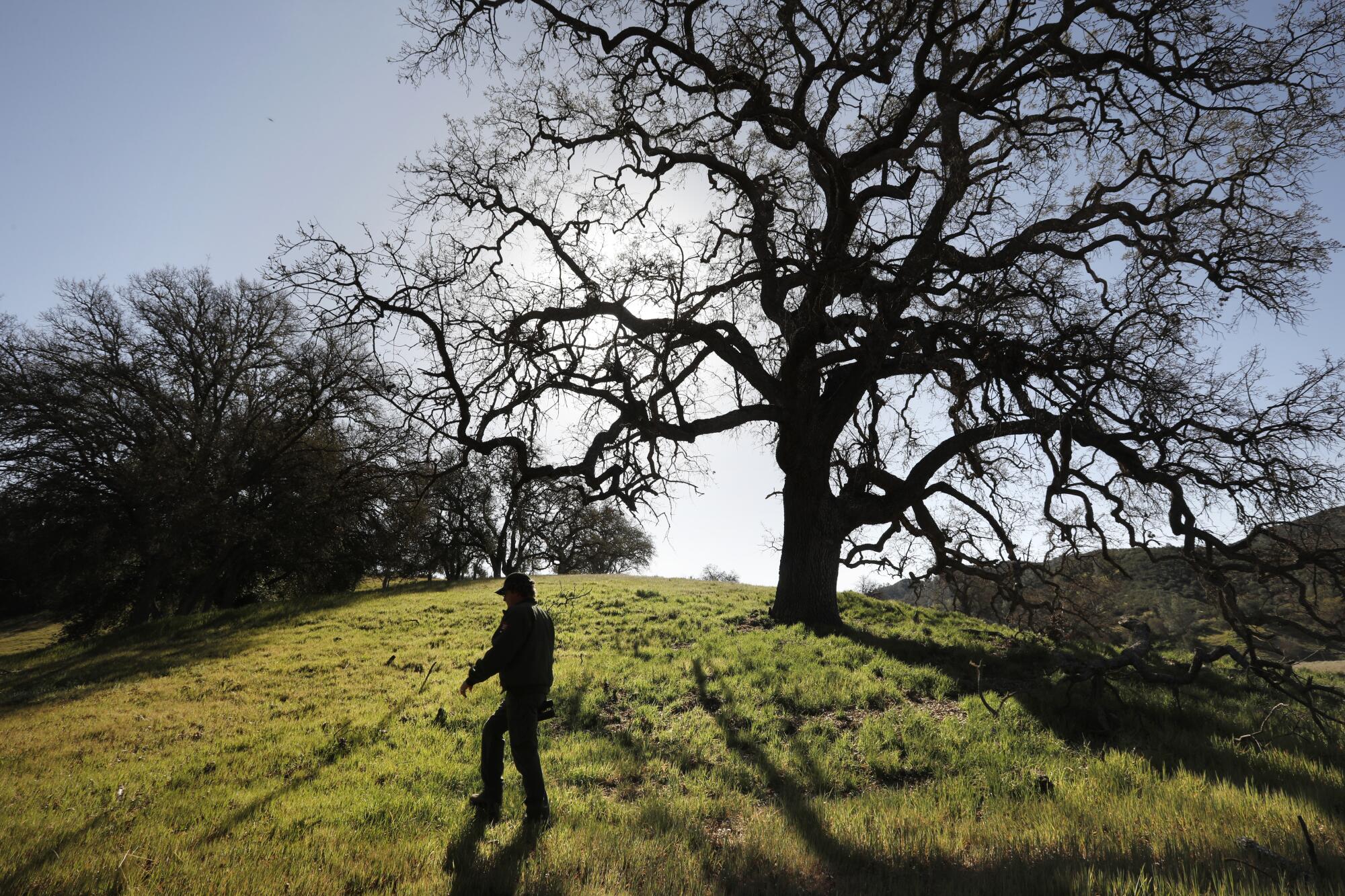
More to Read
Sign up for Essential California
The most important California stories and recommendations in your inbox every morning.
You may occasionally receive promotional content from the Los Angeles Times.
